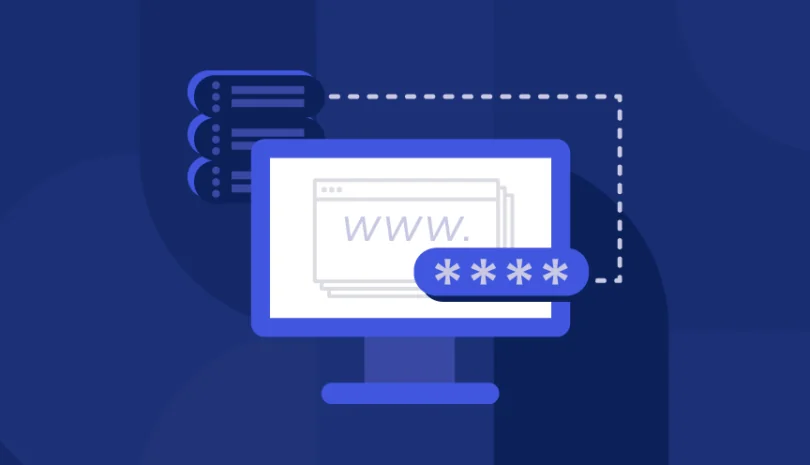Businesses today rely on a growing network of third-party vendors to support everything from operations and IT infrastructure to marketing and customer service. While these partnerships create efficiencies and enable scale, they also introduce new risks, especially when vendor relationships are poorly managed or lack oversight.
That’s where a vendor management framework becomes essential. It provides a structured, repeatable approach to managing third-party vendors throughout their entire lifecycle, from onboarding to offboarding. A strong framework helps ensure vendors meet performance expectations, comply with relevant regulations, and align with your business goals.
In this guide, we’ll walk through the core components of a vendor management framework, explain why it’s essential for modern organizations, and provide a step-by-step plan to build one tailored to your needs. Whether you’re managing a handful of vendors or a complex global supply chain, this framework will help you improve visibility, reduce risk, and create stronger vendor relationships.
What is a Vendor Management Framework?
A vendor management framework is a structured approach for overseeing vendor relationships from selection and onboarding through performance monitoring, risk management, and eventual offboarding. It ensures that third-party partners are evaluated, governed, and supported consistently throughout the relationship.
Rather than relying on ad hoc processes or informal communications, a vendor management framework provides defined policies, workflows, and tools to help manage expectations and responsibilities on both sides. It includes key elements like due diligence, contract management, performance tracking, and compliance monitoring.
The goal is to align vendor services with your business objectives while reducing risks, improving accountability, and fostering long-term collaboration. A well-designed framework also helps maintain compliance with regulatory standards and internal policies.
Whether you’re a small business working with a few essential providers or a large enterprise managing hundreds of third-party relationships, a vendor management framework brings structure and clarity to every stage of the vendor lifecycle.
Why Your Business Needs a Vendor Management Framework
Third-party vendors can enhance your operations, but they can also introduce financial, operational, and cybersecurity risks. Without a clear structure in place, it’s difficult to manage vendor relationships consistently or catch potential issues early. A vendor management framework helps reduce uncertainty and ensures you’re protected from unexpected disruptions.
From a compliance standpoint, frameworks are also essential. Regulations like GDPR, SOC 2, and HIPAA require businesses to demonstrate oversight of their vendors, especially those with access to sensitive data. A formal framework helps you meet these obligations and maintain audit readiness.
But it’s not just about risk. A vendor management framework improves collaboration by clearly defining expectations, roles, and responsibilities. It promotes transparency across both parties and makes it easier to resolve issues, track progress, and adapt to change.
Ultimately, a strong framework supports business resilience. It creates a foundation for scalable vendor relationships that are both secure and strategic.
Key Components of an Effective Vendor Management Framework
A successful vendor management framework goes beyond contracts and checklists. It’s a complete system designed to manage vendor relationships throughout their entire lifecycle, from onboarding to offboarding. A strong framework brings structure, clarity, and accountability to every stage of the process. It helps reduce risk, improve service delivery, and ensure vendors stay aligned with your business goals and compliance requirements.
There are six core components that make up an effective framework. Each one plays a critical role in keeping your vendor ecosystem secure, efficient, and scalable. Here’s what your framework should include and why each part matters.
Vendor Onboarding
Onboarding is your first real opportunity to set the tone for the vendor relationship. It’s where expectations are defined, risks are assessed, and the foundation for long-term success is laid. Start by creating clear selection criteria that reflect your business needs, compliance requirements, and risk tolerance.
Before bringing a vendor on board, conduct thorough due diligence. This includes reviewing financial health, performing security assessments, checking compliance credentials, and asking for relevant certifications. Look into the vendor’s track record with similar clients to get a sense of reliability and performance.
A formal onboarding process ensures consistency across teams, helps you meet internal and regulatory requirements, and sets vendors up for success from day one. It also gives you the documentation and data you’ll need later for audits, performance tracking, and contract management.
Contract Management
Contracts aren’t just paperwork, they’re the blueprint for how your vendor relationships will work in practice. A strong contract should clearly define deliverables, timelines, pricing, and service expectations. It should also include service level agreements (SLAs) and key performance indicators (KPIs) so you have measurable benchmarks for accountability.
Beyond the basics, your contract should also cover important areas like data security, privacy obligations, intellectual property ownership, regulatory compliance, and exit terms. These details protect your organization and help avoid disputes down the line.
Make sure contracts are organized, searchable, and easy to update. Use a contract management system to track renewals, changes, and expiration dates so you never miss a key milestone or renegotiation window.
Performance Monitoring
Once a vendor is up and running, you need to know they’re delivering on their promises. That’s where performance monitoring comes in. Set clear metrics upfront. Think response time, delivery accuracy, customer satisfaction, or system uptime and measure them regularly.
Use dashboards or reporting tools to keep performance data accessible, and schedule recurring check-ins with key vendors to talk through results. This keeps everyone aligned and gives you a chance to address issues before they grow.
Don’t just track the numbers, listen to internal teams who interact with the vendor. They’ll often spot inefficiencies or friction points that data alone can’t show. The goal isn’t to micromanage, but to maintain accountability and keep relationships productive over time.
Risk Management
Every vendor introduces some level of risk, whether it’s financial, operational, legal, or cybersecurity-related. Managing that risk starts with identifying which vendors pose the greatest exposure.
Classify your vendors based on how much access they have to sensitive data or systems, the criticality of their services, and their regulatory obligations. High-risk vendors should go through deeper assessments and be monitored more frequently.
Using a third-party risk management tool can make this process much easier. These platforms help automate risk scoring, track ongoing changes, and alert you to new issues such as security vulnerabilities, compliance failures, or financial instability all before they escalate.
The more proactive your risk management process, the more confident you can be in your vendor relationships.
Communication and Collaboration
Strong communication is the backbone of any successful vendor relationship. It keeps expectations clear, surfaces issues early, and helps both sides work toward shared goals.
Set up consistent communication channels and routines. Depending on the vendor’s importance, that might mean monthly check-ins, quarterly business reviews, or as-needed syncs. Create space for both updates and feedback and your vendors should feel comfortable sharing challenges, not just results.
Internal alignment matters too. Make sure your teams know who’s responsible for managing each vendor and how to escalate concerns.
When vendors feel like partners, not just providers, you get better performance, stronger collaboration, and fewer surprises along the way.
Offboarding and Transition
No vendor relationship lasts forever, and when it ends, you want the transition to be smooth, secure, and low-stress. Whether the change is due to contract expiration, performance issues, or business shifts, a structured offboarding process makes all the difference.
Start by reviewing the contract for termination clauses and ensuring all obligations are fulfilled. Then, focus on data handoff, access revocation, and any tools or systems the vendor was using.
If another vendor is stepping in, plan for knowledge transfer and minimize disruption. Capture lessons learned from both internal teams and the vendor to inform future decisions.
Handled well, offboarding protects your data, keeps operations stable, and helps maintain a professional relationship, leaving the door open for future collaboration if needed.
Steps to Build Your Vendor Management Framework
Building a vendor management framework might sound like a big task, but it really starts with something simple: understanding what your business needs. Every organization operates differently, and your vendor landscape will reflect that. The goal is not to create a rigid set of rules, but to build a structured and flexible system that helps you manage risk, stay compliant, and support long-term growth.
Whether you are starting from scratch or improving what you already have, the five steps below will help you create a framework that is practical, scalable, and aligned with how your team works.
Assess Your Needs
Before you can build an effective vendor management framework, you need a clear understanding of your current vendor landscape. Start by taking stock of how many vendors your business works with, what types of services they provide, and how critical each one is to your daily operations. Which vendors handle sensitive data? Which ones support customer-facing functions or help you meet compliance obligations?
Mapping out these relationships will help you identify where you have visibility and where you may need more oversight. Are there vendors flying under the radar? Do some lack performance tracking or formal contracts?
This initial assessment helps you understand the level of control and structure your framework needs. It also highlights where your biggest risks may lie and where to focus your efforts first. Once you know your ecosystem, you can make smarter decisions about policies, tools, and resource allocation moving forward.
Develop Clear Policies
Policies are the foundation of a successful vendor management framework. They give your team a consistent way to select, evaluate, and manage third-party vendors. Start by defining what good looks like: What criteria should a vendor meet to work with your business? How will you assess and classify risk? What standards must they uphold over time?
Include guidelines for onboarding, contract terms, performance reviews, and offboarding. Make sure your policies account for varying levels of vendor criticality and risk. For example, a vendor handling customer data or accessing internal systems should go through a more thorough review than a low-impact service provider.
Your policies should also reflect your industry’s regulatory requirements and your organization’s risk tolerance. Once developed, make them accessible, easy to follow, and reviewed regularly. The goal is to provide clarity and reduce guesswork so everyone managing vendors knows what to do and why it matters.
Invest in Technology
Managing vendors manually might work for a small team or limited vendor pool, but it quickly becomes unsustainable as your ecosystem grows. The right technology can make all the difference by helping you centralize information, automate routine tasks, and maintain real-time visibility into risk and performance.
Vendor management systems (VMS) and third-party risk platforms are designed to streamline onboarding, track compliance, manage contracts, and monitor vendor performance. Look for tools that integrate easily with your existing systems, such as your ERP, procurement, or CRM platforms.
A good solution should make life easier for your team, not add complexity. It should support your workflows, not force you to change everything. Technology should enhance transparency, reduce manual errors, and give you insights that help with faster, more confident decision-making.
As part of your framework, the right tech enables you to scale your program and manage vendor risk more proactively.
Train Your Team
Even the best vendor management framework won’t be effective without team buy-in. Training is key to making sure everyone understands their role and knows how to apply the framework in practice.
Start by identifying who’s involved in vendor management. This could include procurement, legal, IT, compliance, and finance teams. Make sure each stakeholder understands your policies, the tools in use, and what to look out for when working with vendors. This includes red flags like performance issues, late deliverables, or missed compliance requirements.
Training should be practical and ongoing. Host onboarding sessions for new team members, provide quick-reference guides, and offer refreshers when policies or tools are updated. Encourage a culture of accountability, where vendor oversight isn’t seen as someone else’s job, but part of doing business well.
When your team understands the “why” behind your framework, they’re more likely to follow it and flag potential issues before they escalate.
Test and Refine the Vendor Management Framework
Before you roll your framework out across your entire organization, test it with a small group of vendors. Choose a mix of low-risk and high-risk vendors to get a well-rounded view of how your processes perform in real-world situations.
Use this pilot phase to evaluate how easily your policies are followed, how effective your tools are, and where bottlenecks or confusion may arise. Collect feedback from internal stakeholders and from the vendors themselves. Are the expectations clear? Are the risk assessments manageable? Do teams know where to go for support?
Take what you learn and use it to improve your workflows, documentation, and communication. This helps ensure your framework is not just theoretically sound, but also usable, scalable, and aligned with your day-to-day operations.
Starting small and refining your approach gives your team the confidence and clarity they need before expanding it company-wide.
Benefits of an Effective Vendor Management Framework
An effective vendor management framework does more than streamline operations. It plays a critical role in reducing risk, ensuring compliance, and building stronger, more productive vendor relationships. By implementing a structured approach, businesses gain clear visibility into vendor performance, security posture, and alignment with strategic goals.
Centralizing vendor data and automating core processes like onboarding, due diligence, performance tracking, and reporting helps reduce manual errors and operational bottlenecks. This not only saves time, but also ensures that key steps are consistently followed, especially in high-stakes or heavily regulated environments.
A strong framework also supports compliance with industry standards and regulatory requirements such as GDPR, SOC 2, HIPAA, and ISO 27001. With proper documentation, audit readiness, and policy enforcement built into the process, organizations can avoid fines, legal exposure, and reputational damage.
Just as importantly, a vendor management framework creates a foundation for collaboration. When roles, expectations, and communication practices are clearly defined, vendors are more likely to meet performance goals, stay accountable, and contribute to long-term business success.
Vendor Management Framework Solutions
Building a vendor management framework is one of the most strategic investments your organization can make. It brings structure and consistency to every stage of the vendor lifecycle, from onboarding and performance tracking to risk mitigation and offboarding. With the right framework in place, you can reduce operational and security risks, improve compliance, and foster stronger vendor relationships.
It starts with understanding your vendor ecosystem. From there, you can establish clear policies, assign ownership, and implement the right tools to drive visibility and accountability across your third-party network. A modern framework also helps ensure alignment with industry regulations like GDPR, ISO 27001, and SOC 2.
That’s where Panorays comes in. Panorays helps organizations automate third-party risk assessments, continuously monitor vendor performance and cybersecurity posture, and manage compliance requirements, all in one centralized, easy-to-use solution.
Want to simplify vendor management and gain deeper visibility into third-party risk? Panorays helps you scale your vendor oversight with confidence. Start building a more secure and efficient vendor ecosystem today. Book a personalized demo.
Vendor Management Framework FAQs
-
A vendor management framework is a comprehensive approach to overseeing the full lifecycle of vendor relationships. It covers everything from initial selection and onboarding to contract management, performance monitoring, communication, and offboarding. The framework ensures vendors are aligned with your business objectives, regulatory requirements, and operational standards.
Vendor risk management, on the other hand, is a specific function within the broader framework. It focuses on identifying, assessing, and mitigating the risks that vendors may introduce, such as cybersecurity threats, compliance gaps, or financial instability. In short, vendor risk management is one essential piece of a larger, more holistic vendor management strategy.
-
You can start creating a vendor risk management framework by assessing your current vendor landscape, including the number of vendors, services provided, and risk exposure. Develop clear policies for vendor selection, onboarding, performance tracking, and compliance management. Choose supporting technology that helps automate and streamline your processes. Educate your team on the new framework and test it with a subset of vendors before rolling it out organization-wide.
-
With clear policies, defined roles, and structured communication in place, vendors are more likely to meet expectations and work collaboratively. A consistent, transparent approach fosters trust, encourages accountability, and supports long-term strategic partnerships.



